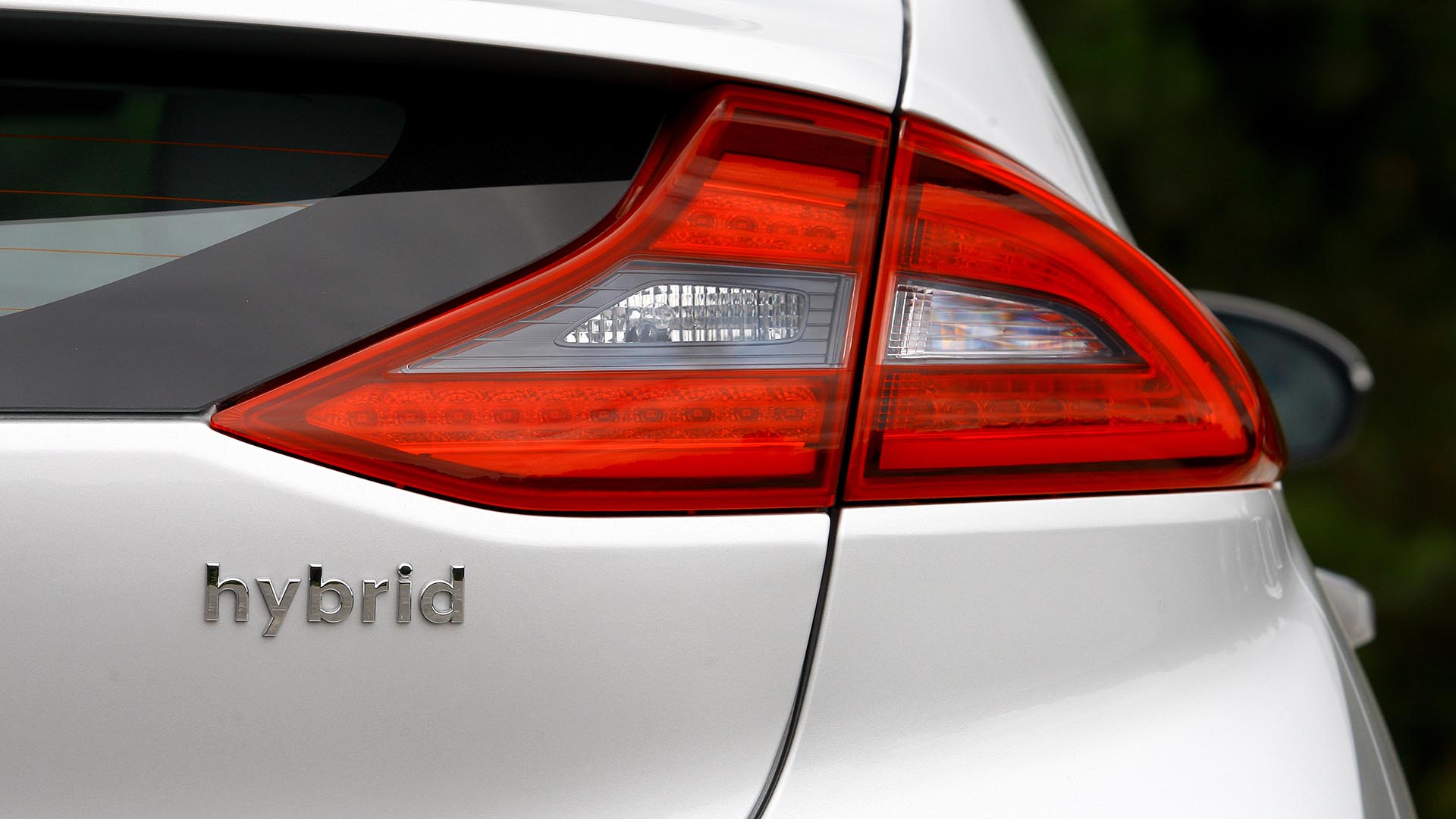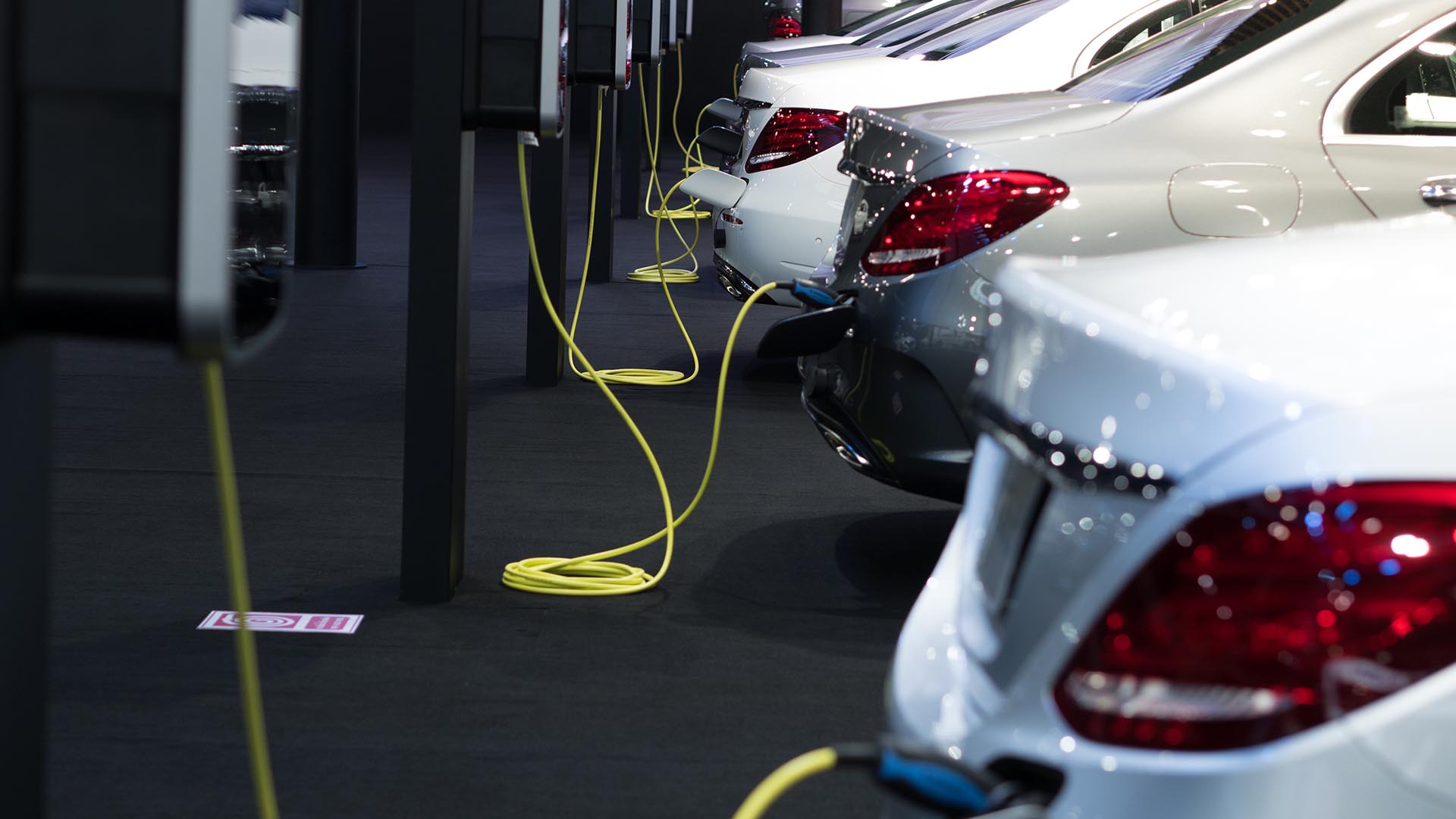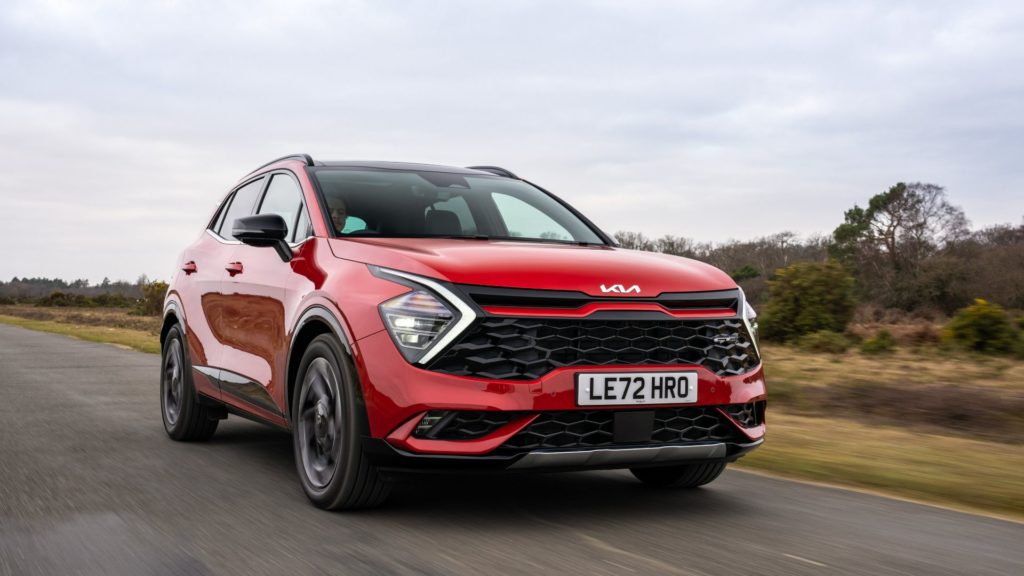One answer to this question is self-evident: plug-in hybrids can be plugged in to charge their batteries, whereas ordinary hybrid cars cannot. However, plug-in hybrids are more expensive to buy.
Consider the evidence. At the time of writing, the Kia Sportage hybrid will set you back £35,445 in GT-Line spec, while the plug-in hybrid version costs £40,545. There are good reasons for the price difference, which we’ll come to in a moment.
Before we begin, a note about the ‘self-charging hybrid’ term you may have seen used by Toyota, Lexus and Kia. It’s little more than a marketing tool to elevate a standard hybrid to a higher plain – there are no technical differences.
What is a hybrid?

In simple terms, a hybrid car combines a petrol or diesel engine with an electric motor. The most famous hybrid car in the world is the Toyota Prius, to the extent that it’s become the brand generic. Ironically, the latest version of the Prius won’t be sold in the UK.
In a hybrid vehicle, the internal combustion engine remains the dominant powertrain, with the electric motor on hand to improve efficiency, decrease fuel consumption and improve acceleration.
Hybrids are great in the city, where their regenerative braking captures kinetic energy, which is then used to recharge the batteries. Conversely, hybrids are less impressive on motorways, where there’s little opportunity to harvest lost energy.
They cannot be plugged in, so you’ll only see a mile or two of pure electric range. On the flipside, the car manages the flow of energy, so there’s a hassle-free attraction to running a hybrid vehicle. Go easy on the accelerator pedal and you could see some truly impressive fuel economy figures, particularly around town.
What is a plug-in hybrid?

As the name suggests, a plug-in hybrid (PHEV) can be recharged in the same way you’d recharge an electric car. The key difference is that the electric motor is paired with a petrol or diesel engine, removing any concerns over ‘range anxiety’.
There’s more, though. A plug-in hybrid boasts a larger battery pack and more sophisticated hardware and software than a standard hybrid, which helps explain the higher price.
Crucially, plug-in hybrids deliver a useful amount of pure electric range – certainly more than the 10-mile average daily commute in England and Wales. For example, the Kia Sportage PHEV we mentioned earlier delivers an official (WLTP) range of 43 miles.
Hybrid or PHEV: which one is better?
There’s no doubt that a hybrid is an appealing prospect. The key attraction is their ability to work straight away – there’s no need to worry about charging cables or plugging in. Modern petrol-electric hybrids are especially impressive, with the Toyota Corolla, for example, offering the smooth refinement of a petrol car with the economy of a diesel.
We’d also urge caution before buying a plug-in hybrid. If you don’t recharge the batteries, you’re essentially paying extra for a heavier and less efficient vehicle. The weighty battery pack will put a big dent in the economy when you’re not in electric mode.
Beyond that, a plug-in hybrid offers more than a regular hybrid. The ability to tackle the daily commute on electric power is an obvious attraction – you could find you rarely need to visit a petrol station.

There are also tax benefits associated with a plug-in hybrid. A Sportage hybrid emits 129g/km CO2, which results in a first-year VED (road tax) rate of £200. Meanwhile, thanks to CO2 emissions of 25g/km, the plug-in hybrid is tax-free in the first year.
Company car drivers will see similar tax benefits, which is why plug-in hybrids are so popular in the fleet sector.
We’d also recommend a plug-in hybrid as a step towards an all-electric future. There are no range anxiety issues, plus you get the opportunity to familiarise yourself with the process of charging the batteries.
The next step would be a pure electric car, so browse the pages of Motoring Electric to discover more.
ALSO READ:
What are the pros and cons of an electric car?


[…] has pulled the wraps off a surprise new sports car. The Iconic SP concept uses a plug-in hybrid drivetrain with a rotary engine – and strongly hints at the next-generation MX-5, due in […]
[…] diesel and plug-in hybrid versions are available, along with a choice of trim levels. The entry-level Sport comes with […]
[…] ahead, Simon Busby says the company will consider a plug-in hybrid system to meet tightening emissions rules – and perhaps a conventional engine fuelled by […]
[…] one engine is offered at present – a 110hp three-cylinder petrol that returns 48.7mpg – but a hybrid version is due later this year. The Jogger’s weak-point is a poor showing in Euro NCAP crash tests, […]
[…] which features the styling of an SUV. The Jazz isn’t cheap, but consider its standard equipment, hybrid technology and likely […]
[…] A45 S hot hatchback is one of the fastest point-to-point cars you can buy, while the A250e plug-in hybrid offers up to 47 miles of electric […]
[…] The 296 GTB and its drop-top GTS sibling combine a high-revving 3.0-litre turbocharged V6 with a plug-in hybrid system. Driving the rear wheels only, the result is 0-62mph in 2.9 seconds and a 205mph maximum, […]
[…] formerly known as the Seat Leon Cupra also comes in two electrified guises: 150hp or 245hp plug-in e-Hybrid. However, the 300hp petrol version – which uses a similar engine to the Volkswagen Golf R – is […]
[…] equipment and technology that will delight the most demanding of gadget freaks. Petrol, diesel and plug-in hybrid versions are available, along with a 571hp 4.0-litre V8 in the […]
[…] its lonesome, the new engine produces 485hp, but the hybrid system contributes up to 54hp on top. Combined torque output is 450lb […]
[…] the move, the X3 feels like a high-riding BMW 3 Series. Petrol, diesel and plug-in hybrid versions are available, with the latter offering up to 55 miles of electric range. There’s also […]